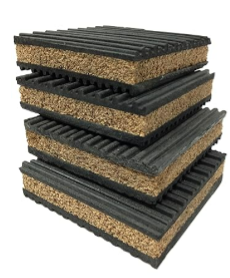Competency F4: Install Hydronic Systems
Learning Task 4
Describe troubleshooting and repair procedures for hydronic systems, components, and controls
Client Consultation
A service call happens when a problem is noticed. Much information can be gathered by the client calling for service. Take time to speak with the client before beginning the troubleshooting process.
Inspection/Testing
Sensory
When beginning a diagnosis, use visual indicators like water spots to help find issues such as leaks or a discharging relief valve. Carefully touch the pipes and components, feeling for temperature anomalies that might indicate thermal disequilibrium. Listen to the system for unusual noises that could point towards an overworked pump or unwanted air.
Diagnostic
Troubleshooting something like a no heat service call for a hydronic heating system involves a systematic approach to identify and address the underlying issue causing the lack of heat. There are no short cuts and referencing the manufacturer’s specifications is a good place to start.
Other steps to follow may go like this:
- Ensure the thermostat is set to the desired temperature and heating mode (e.g., “Heat” or “Auto”).
- Verify that the fan setting is on “Auto” or “On”. Test the thermostat – raise the thermostat temperature by a few degrees above the current room temperature to check if the heating system responds.
- Check the power supply – confirm that the heating system has power. Check circuit breakers and switches to ensure they are in the “On” position. Verify that the heating system’s emergency switch is in the “On” position.
- Ensure that there is an adequate supply of fuel (e.g., gas, oil) to the heating system.
- Check air filters – inspect and replace dirty or clogged air filters. Restricted airflow can cause overheating and system shutdown.
- Examine the heating equipment – inspect the boiler or furnace for any visible issues, such as loose wires, damaged components, or unusual noises.
- Check for error codes or indicator lights on the equipment’s control panel.
- Reset the system – if the boiler or furnace has a reset button, try resetting it to see if the system restarts.
- Verify pump operation – listen for the circulator pump operating. If it’s silent, there may be an issue with the pump. Check for signs of circulation, such as water movement or temperature changes in the system.
- Check radiators or heat emitters – touch each radiator or heat emitter to see if it’s warm or cold. Uneven heating may indicate air in the system or a circulation problem. Bleed air from radiators if necessary.
- Zone valves – confirm that zone valves are opening and closing as they should. Ensure that thermostat wires and control connections are secure.
- Review error codes – if your heating system has a control panel or display, note any error codes displayed, and consult the system manual or manufacturer for guidance.
- High-temperature limit switch – reset the high-temperature limit switch on the heating equipment (if applicable). This switch can trip in response to overheating.
Monitoring
Implement a maintenance program that includes regular inspections, monitoring of system parameters (pH, oxygen levels), and water quality testing. Keep an eye on the system’s performance, especially during the initial hours or days after repairs or venting an airlock.
Lock out/Tag out
Hydronic systems have hazardous energy sources, such as electrical, mechanical, hydraulic, pneumatic, chemical, and thermal energy. Lockout/tagout controls these energy sources, making it impossible for them to be accidentally or unintentionally activated during maintenance or servicing. This prevents accidents related to energy release. Proper LOTO procedures protects the safety and well-being of workers. LOTO also safeguards the integrity of equipment and machinery. When maintenance or repairs are performed on powered equipment, there’s a risk of damage if it is not properly de-energized and locked out. Preventing damage to expensive machinery saves both time and money.
Isolate Components
A hydronic system can have many components that could require isolation when troubleshooting. Many will have an electrical source, while others work with the system flow. When performing repairs, proper isolation will be needed to maintain safety. The hydronic system may need to be powered off and all electrical power to pumps, boilers, and other components disconnected. Check for dedicated circuit breakers that can be switched off. A furnace will have a ‘on off’ switch close by. Most hydronic systems are equipped with isolation valves that allow you to isolate specific components or zones. These valves are typically found on both the supply and return sides of the component. Remember that even after isolating a component, there may be trapped air within the isolated section. Use bleed valves or air vents to release any air from the isolated section to prevent airlocks.
Conditions for Repair/Replacement
Thermal anomalies
- Air in the system
- Flow imbalances
- Blockages or restrictions
- Cavitation
- Scaling and corrosion
- Improper circulation
- Thermostat issues
- Lack of system balancing
- Improper expansion tank functionality
- Incorrect boiler operation
- Inadequate insulation
- Water quality issues
- Thermal expansion and contraction
Any one of these conditions could be the culprit of a thermal anomaly. Once the cause is identified, steps can be taken for repair. Air can be bled from high points and heat emitters. Balancing valves used to better meet design flow requirements. Water conditioners can be added to improve the water quality. An expansion tank can be drained, recharged, or replaced. Pumps and insulation can be repaired and thermostats check for functionality.
Leaks
The repair method you choose will depend on the type and size of the leak. If the leak is at a threaded connection, use a pipe wrench to tighten the fitting. Be careful not to overtighten and potentially damage the threads. If a valve or component is damaged and causing the leak, replace it with a new one. The replacement component must match the specifications of the original. For small to moderate leaks on pipes, you can use pipe repair clamps designed for temporary or emergency repairs. For minor leaks or small cracks, you can apply pipe sealant or pipe repair tape to seal the area. Make sure the surface is dry and clean before applying. For major leaks, the pipes or components will need to be isolated with a nearby valve or a whole system shutdown, and then replaced.
Corrosion
Corrosion can lead to equipment damage, reduced heat transfer, and system inefficiencies. Choose corrosion-resistant materials like stainless steel, brass, or copper for pipes, fittings, valves, and heat exchangers. Proper system design helps prevent corrosion. The system must be designed to minimize the presence of oxygen in the water, as oxygen can promote corrosion. Closed-loop systems with minimal air infiltration will be best for eliminating air. Air elimination devices, such as air vents are needed to remove dissolved oxygen and trapped air from the system.
Maintain water quality by using demineralized or deionized water with low mineral content, which can reduce the risk of scale and corrosion. Properly treat and condition the water to control pH levels and minimize the potential for scaling or acidic corrosion. Use chemical inhibitors or water treatment chemicals that are specifically designed to prevent corrosion. These chemicals can create a protective layer on metal surfaces, inhibiting corrosion.
In some cases, cathodic protection systems can be employed to protect metal components from corrosion. These systems use sacrificial anodes or impressed current systems to protect vulnerable metals from corrosion.
Before commissioning a new system, flush it thoroughly to remove any debris, flux, or contaminants. Regularly flush and clean the system as part of routine maintenance to prevent the buildup of corrosion-inducing particles.
A relatively new product is a magnetic filter. Magnetic filters or dirt separators in the system are used to capture and remove ferrous particles that can promote corrosion. Expansion tanks must be correctly installed and sized for the system to accommodate thermal expansion without introducing excessive oxygen. Seal potential points of oxygen ingress, such as improperly sealed air vents or improperly fitted components. Consider using non-metallic components (such as plastic or composite materials) in areas of the system where corrosion is a concern. Ensure proper venting of the system to remove air and reduce the presence of oxygen. Maintain water temperatures within the recommended range for your specific system to minimize the potential for corrosion.
Control Malfunction
If a control is malfunctioning, it will need to be repaired or replaced. The replacement part will need to meet the system specifications and may require a system shut down and draining for installation. Removal of a component can be difficult and potentially dangerous. Make sure shut down procedures are followed and potential pressure is relieved before loosening a component. Also, confirm the supports around the component are secure and will hold the weight of the surrounding piping before removing anything.
Vibration
Excessive vibration can lead to accelerated wear and tear on system components. Vibrations can disrupt the smooth flow of water or glycol in the system. This can lead to flow restrictions, uneven heat distribution, and reduced system efficiency. Vibration often produces audible noise, which can be disruptive and annoying to building occupants. This noise can interfere with comfort levels and may lead to complaints. Vibrations can loosen pipe connections, valve seals, and other fittings in the system. This can result in leaks, which not only waste water but also pose potential structural and property damage risks. Vibrations can contribute to system imbalance, causing some areas of a building to receive inadequate heating or cooling while others receive too much. Excessive vibration can compromise the structural integrity of system components, such as pipe supports or hangers. This poses safety risks, as components may become dislodged or fail catastrophically.
Properly securing and fastening pipes and components to minimize movement. Balancing the system to ensure even flow distribution. Using vibration-dampening materials or isolators (Figure 12) to reduce vibration transmission. Installing expansion tanks and flexible connectors to absorb thermal expansion and contraction.

Irregular Flow
- Air in the system
- Blockages or restrictions
- Imbalanced flow distribution
- Pump problems
- Valve malfunctions
- Thermal expansion and contraction
- Cavitation
- Piping issues
- System imbalance
- Water quality issues
- Pump cavitation
Like thermal anomalies, irregular flow can be cause by a list of things. After troubleshooting the system and identifying the issue or issues, steps can be taken to repair or replace the culprit.
Air Lock
An airlock in a hydronic heating or cooling system can disrupt the flow of water, reduce the system’s efficiency, and lead to issues like uneven heating or cooling.
- Turn off the power to the hydronic system to prevent electrical hazards.
- Determine the location of the airlock by observing the symptoms, such as reduced flow or gurgling noises in the system. Common locations for airlocks include pipes, radiators, or components like zone valves.
- If the airlock is in a radiator or heat, use a radiator key or a suitable tool to open the bleed valve at the top of the radiator. Turn it counterclockwise slightly until you hear air escaping. Allow the air to escape until a steady stream of water comes out without sputtering or hissing. Be prepared to catch any water that comes out. Close the bleed valve by turning it clockwise. Repeat this process for all affected radiators or heat emitters.
- If the airlock is in pipes or components, such as pumps, valves, or zone controls, you can use manual venting to release the trapped air. Locate the air vent or bleeder valve on the affected component. These are typically small, screw-like devices. Place a container or bucket under the vent valve to catch any water that may come out. Use a wrench or pliers to open the vent valve by turning it counterclockwise. Be cautious, as air or water may escape. Wait until all the air has been expelled and a steady stream of water flows from the vent valve. Close the vent valve by turning it clockwise. Repeat this process for all affected components.
- After venting air from the radiators and components, turn the heating or cooling system back on. Verify that water flows evenly through the system without any unusual noises. Monitor the system for any signs of air returning. If air continues to be a problem, you may need to investigate further for underlying issues, such as leaks or improper system design.
Return to Service
After completing repairs, slowly open any isolation valves that were closed during maintenance to allow the flow of water or glycol through the system. If components were isolated, open any bleed valves or air vents to release any trapped air in the system. Start with the highest points in the system and work your way down. Continue bleeding until only water flows, without air bubbles.
Monitor the system pressure gauges to ensure that the pressure remains within the recommended operating range and make necessary adjustments. Go through the sensory checks, also making adjustments as needed. Call for heat and confirm that the system responds. Allow the system to operate for a period of time, monitoring it closely for any irregularities, leaks, or performance issues. If the hydronic system serves a building, inform the occupants or building managers that the system is back in operation and complete the client consultation.
Documentation
Documenting the troubleshooting and repair process provides a clear record of the activities performed, verifies compliance with regulations, and serves as a reference for future maintenance or troubleshooting. It is important to follow any specific documentation requirements or guidelines provided by local authorities, regulatory bodies, or industry standards when commissioning fixtures and appliances.
 Now complete Self-Test 4 and check your answers.
Now complete Self-Test 4 and check your answers.
Self-Test 4
Self-Test 4
Media Attributions
- Figure 12. “Isolation pads” from Husky is used for educational purposes under the basis of fair dealing.

